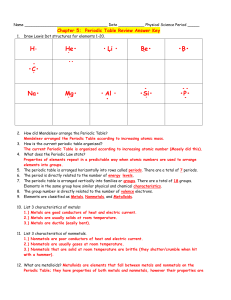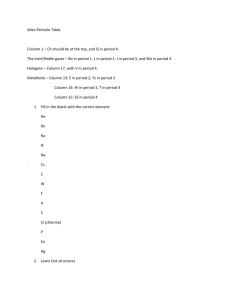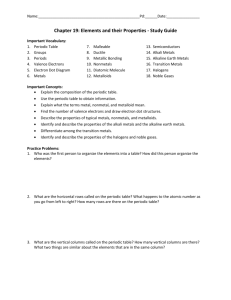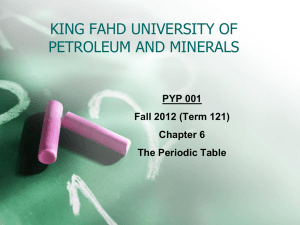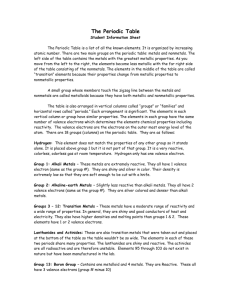CHEM I Periodic Table
advertisement
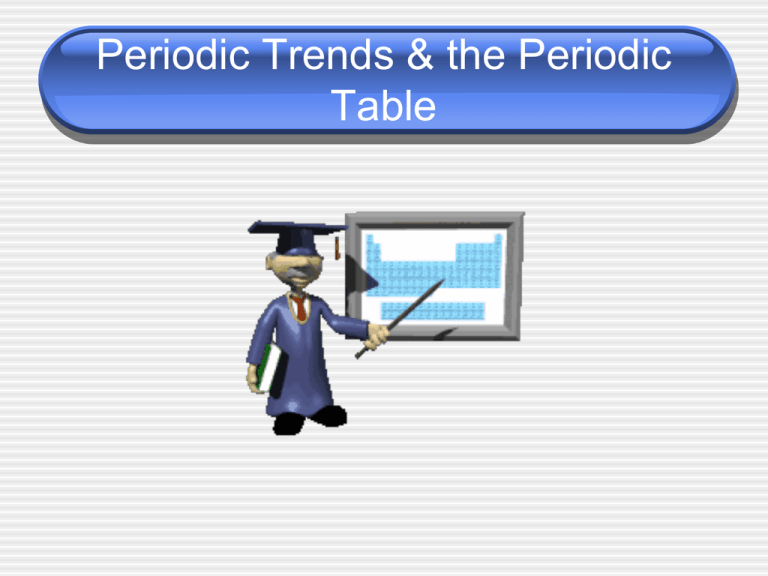
Periodic Trends & the Periodic Table Periodic Table • Periodic Table – arrangement of elements in order of increasing _atomic number_with elements having similar properties in common Groups– vertical columns Periods– horizontal rows Group Names Group 1A 2A 3A 4A 5A 6A 7A 8A Name Alkali metals Alkali Earth metals Boron family Carbon Family Nitrogen Family Oxygen Family or Chalcogens Halogens Nobel gases Groups • The group tell you the number of valence electrons that the element has • Valence electrons are electrons in the outermost orbitals of the atom • All group 1A elements have 1 valence electron. Likewise, all group 8A elements have 8 valence electrons. Characteristics • Elements in the same group exhibit similar chemical characteristics due to the fact that they all have the same number of valence electrons. • The most stable number of valence electrons is eight • This is called an octet Charges • Every element in the s and p block wants 8 valence electrons to become stable. They will gain or lose valence electrons to form an octet Physical States and Classes of the Elements • The majority of the elements are _____________. • They occupy the entire left side and center of the periodic table. • _____________ occupy the upper-righthand corner. • _____________ are located along the boundary between metals and nonmetals Metals • Metals are elements that have _____________, conduct heat and electricity, and usually bend without breaking. • The Transition metals are in the middle of the Periodic table, forming the transition from the left to the right side. Inner Transition Metals • The first series of inner transition elements is called the Lanthanides . • The second series of inner transition elements, the Actinides • These groups are also referred to as the Rare Earth Metals. Non Metals • Most nonmetals don’t conduct electricity, are much poorer conductors of heat than metals, and are brittle when solid. • Many are gases at room temperature; those that are solids lack the luster of metals. Properties of Metals and Nonmetals Metalloids • Metalloids have some chemical and physical properties of metals and other properties of nonmetals. • In the periodic table, the metalloids lie along the border between metals and nonmetals. • B, Si, Ge, As, Sb, Te, Po, At



